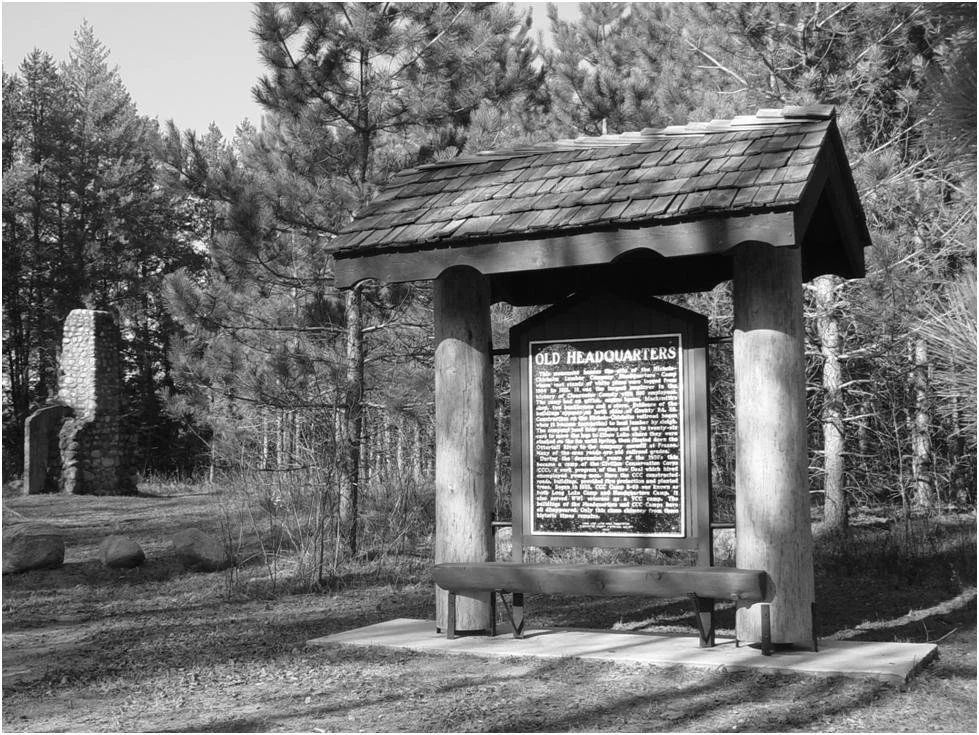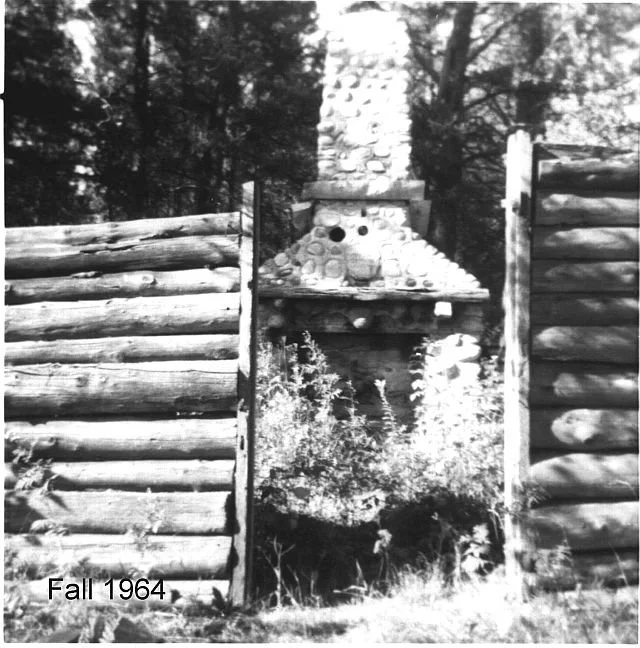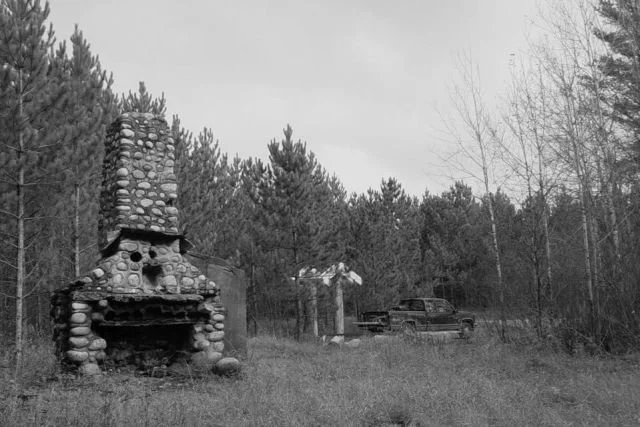Old Headquarters Historic Monument
THE MONUMENT
This monument honors the site of the Nichols-Chisholm Lumber Company Headquarters Camp where vast stands of white pines were logged from 1904 to 1918. It was the largest employer in the history of Clearwater County with 500 employees. The camp had an office, engine house, blacksmith’s shop, two bunkhouses and a store. Evidence of the buildings appears on both sides of County Rd. 39. Construction on the Nichols-Chisholm railroad began when it became impractical to haul lumber by sleigh. The company used four engines and up to twenty-six cars to move the logs to Elbow Lake where they were stacked on the ice until spring, then floated down the Ottertail River to the company sawmill at Frazee. Many of the area roads are old railroad grades.
During the depression years of the 1930’s this became a camp of the Civilian Conservation Corps (CCC), a work program of the New Deal which hired unemployed young men. Here the CCC constructed roads, buildings, provided fire protection and planted trees. Begun in 1933, CCC Camp S-69 was known as both Long Lake Camp and Headquarters Camp. It also served WWI veterans as a VCC camp. The buildings of the Headquarters and CCC Camps have all disappeared. Only this stone chimney from those historic times remains.
Chimney taken in the fall of 1964
Chimney during monument construction in the fall of 2007
The CCC Camp July 1, 1933-November 4, 1933
The book “Hard Work and a Good Deal” by Barbara A. Sommer gives the most concrete information about Long Lake Camp S-69. The “S” designated state forest. At the time the camp was established the lake was known as Long Lake rather than Long Lost Lake. The company number was 1787/1762 and the post office was Park Rapids. The company was organized at Fort Riley, Kansas on May 22, 1933. It occupied the camp from July 1, 1933 until its transfer to Squaw Lake (F-36) November 4, 1933. The White Earth State Forest was its assigned work area. Squaw Lake camp was located in Itasca County and operated there until it was closed and transferred to Remer (F-46) in Cass County in November of 1935. The Remer Camp continued to operate until April 1942. It later became the first German prisoner of war camp in the Chippewa National Forest, operating from 1943 to 1945.
It is not known if the CCC camp enrollees occupied any buildings that may have been left from the logging camp. An article in the Bagley paper dated July 6, 1933 mentioned the men were living in tents in area camps. The year the chimney was built and what building it was a part of is also unknown. Three names are etched in concrete on the back of the chimney, T.F.Wessell, J.A.Vogrin, and S.F. Wolf. A death certificate was found for a Syrl Francis Wolf who died in 1928 in Becker County. This indicates the chimney could be a remnant of the logging camp. No pictures or camp rosters were located. Various people were interviewed who knew people that served at the camp but details and dates were unknown. It was said to have served also as VCC or veteran’s camp and/or a transient camp.
Jim Svobodny videotaped an interview with Buck Wilson, an area logger in the summer of 1982. Buck talked about coming to the area of “Long” or “Lost Long” lake in 1934 to set up a small logging operation. When questioned about the chimney area he said it was a transient camp when he arrived. There were men from all over, he mentioned Missouri and California, with ages ranging from 20 to 60. This would be the year after the CCC camp was moved to Squaw Lake. He also described the building that contained the chimney as an office and storeroom as well as where the camp commander lived. There were cattle as well as gardens. In 1935 the transients were moved to the CCC camp near Elbow Lake according to Buck. Later someone herded sheep in the same area. He thought the buildings burned in the late 40’s or early 50’s.



